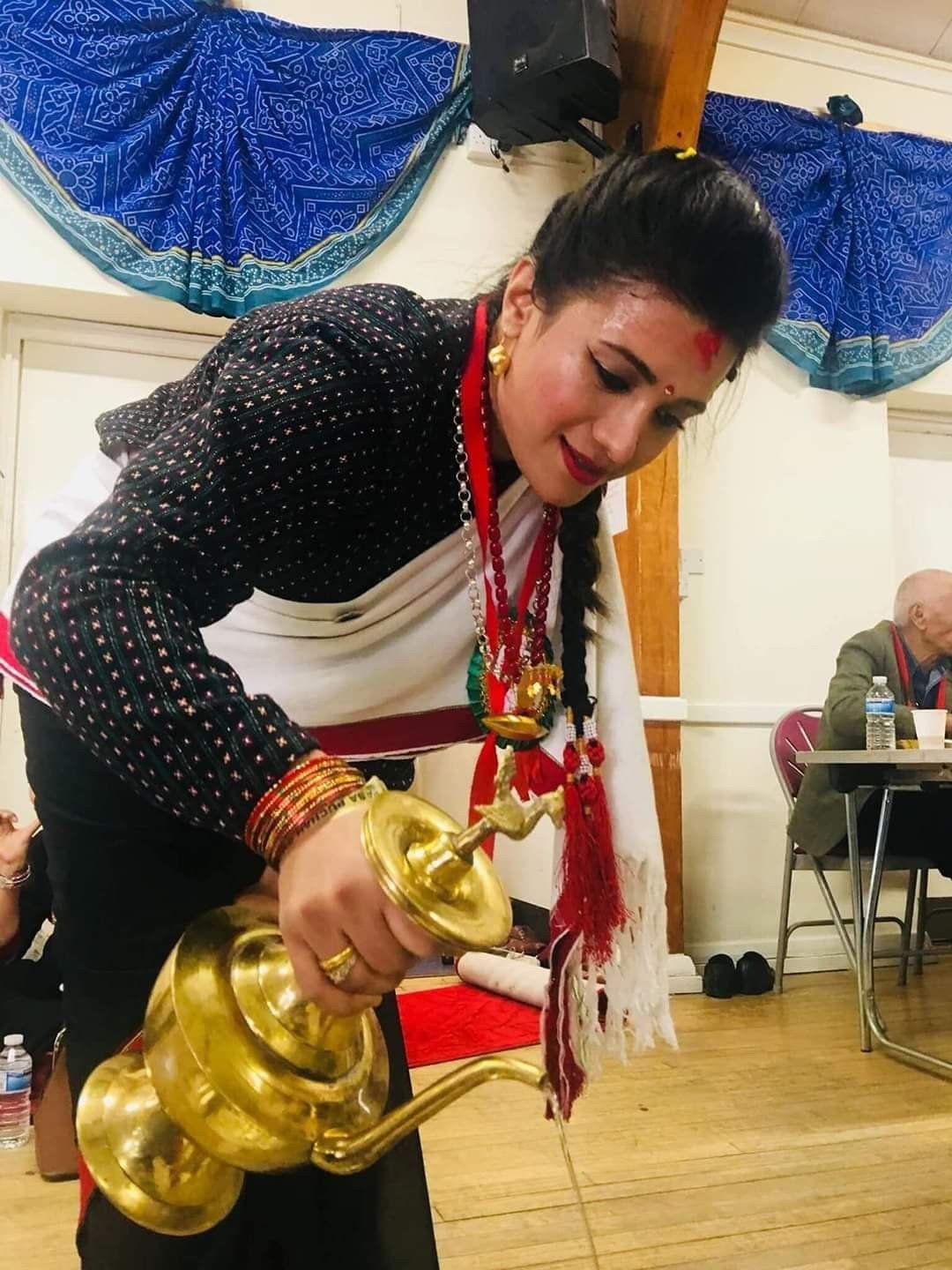
This section of the information resource focuses on two areas. Firstly, on three iconic Nepali clothing items worn or utilised extensively from Embassy to community leads and major to local UK Nepali community events and societies levels, and secondly on in-the-UK Nepali community Western style men’s suits and Nepali women’s traditional ethnicity and culture related clothing as worn, respectively from high level business and formal occasions through to daily in the street as well as in the home. Below Newari lady in Newari traditional costume at a UK Nepali community cultural event.
Three iconic Nepal clothing items used extensively in the UK from Embassy of Nepal and major to minor community organisations events:
Topi:
The Topi is a cylindrical hat (there is a comparable, often white, hat worn in India, with similar status and Hindustani cultural importance), traditionally made of hemp, and black, or in given ethnic culture patterns of subtle colours, with ‘Dhaka’ being perhaps the most famous non-black design for coloured Topis.
Worn at all formal occasions by Nepali politicians, including prime ministers and ministers and senior government officials, as well as Nepali ambassadors, the Topi is also worn by craftsmen, farmers, labourers, and conveys a sense of unique distinct Nepali cultural identity and personal dignity. In the UK, perhaps the largest single collection of Topis is that, numbering hundreds, of Dr Mark Watson, Head of Flora at the Royal Botanical Gardens Edinburgh (RBGE), who has provided invaluable support in preliminaries to this information resource project with key aspects of the UKNFS enablement of the Nepal Art Council (NAW) Britain – Nepal Bicentenary project. Dr Watson’s priceless knowledge is shared through a link on the Floras of Nepal in the relevant section of this information resource. Topis are commonly warn in all UK Nepali community towns such as Ashford in Kent, Aldershot, Swindon, London (west and South-East), but almost always in terms of on the street level, by older to especially elderly Nepali men.
Daura Suruwal:
The Daura Suruwal – trouser, shirt (‘Daura’: a long shirt with close fitting around the neck and strings to tie to the body), sometimes black waistcoat, but in the classic Daura Suruwal a dark jacket, and black Topi – is for Nepali men THE de-facto national-level representative formal attire. For ladies the parallel being Nepali forms of sari linked to given ethnic peoples and cultures, and castes.
Reputedly it was Prime Minister Jung Bahadur Kunwar [later Jung Bahadur Rana, founder of the Rana Dynasty] that added the dark jacket – this is of a classic Western/European NOT South Asian, kind. Prime Minister Jung was perhaps the most famous figure in the history of Nepali-British special relations in the 19th Century, and travelled in his capacity as Prime Minister of Nepal to England (and France) in 1850. During that visit Jung Bahadur was an avid learner, including from cutting edge Western armaments to clearly clothing couture.
As such the classical Daura Suruwal is perhaps the epitome of Nepali national level costume (for males) being a Nepali/South Asian – British/Western synthesis. The Newar people of Nepal have been the origin of the classical Daura Suruwal, through a traditional Newari men’s costume, the Tapalan (this lacked the Topi and jacket/waistcoat however).
As with wearing of Topis, so too, but to a little lesser extent, Daura Suruwal are often worn by older UK Nepali men in towns and locations that have substantial Nepali populations.
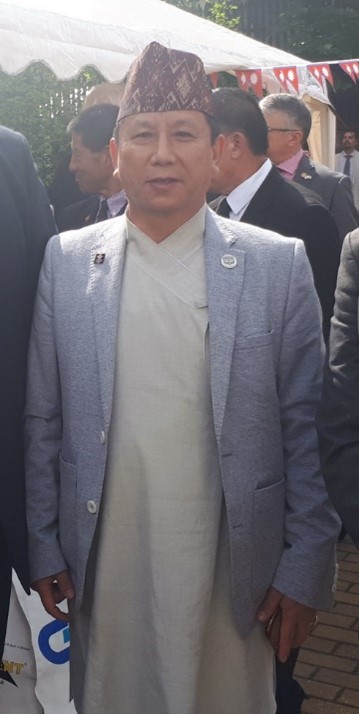
Image above to left of Sahara UK Association immediate past president, Min Bahadur Gurung wearing Daura Suruwal and Topi.
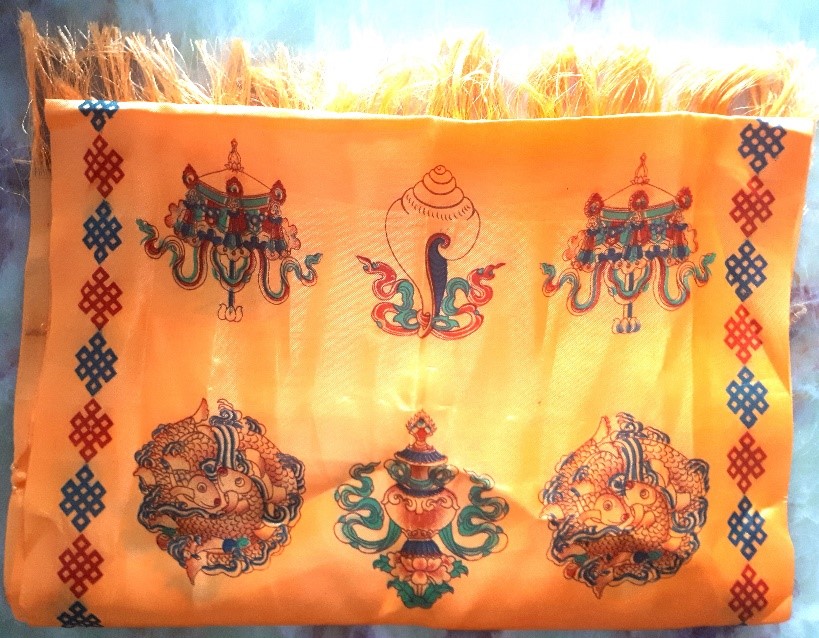
Khada (ceremonial scarf of Tibetan-Sherpa cultural zone origin) also spelled ‘khata’: The Khada ceremonial scarf, although originally Tibetan culture, and therefore at global cultural zone level Tibetan – Sherpa, in origin has been increasingly over the late 19th trough to early 21st centuries, iconic as a THE token of conferment of respect and auspicious good wishes.
It is conferred on those who have achieved some major accomplishment (such as passing out from school or college, graduating from university, at point of travelling to or from abroad [international airports such as Tribhuvan International Airport in Nepal or Heathrow in the UK often bear witness to khada presentations], or on important community events [AGMs, Annual Dinners, etc.], or on initiating or concluding political or business occasion meetings of importance, and of course in regard to marriages!).
These silk scarves are traditionally white or crème, but can often as well be nowadays yellow/golden, red, green, and other colours, and can have organisation, society logos and sacred religious scripts to convey wisdom or provide protection, printed on them.
Khada presentations are a special feature at major cultural or society events, including at the Embassy of Nepal in London. The scarves are presented sometimes to VIPs and other respected persons on entering the event, or when called up to the main stage or presentation area: the recipient gives the Namaste/Namaskar two hands palms together salute in reciprocation to the officer/dignitary offering and presenting the khada.
The Khada is perhaps the most symbolic distinctive Nepali culture clothing item in terms of indicating that Nepal is unique for being the geographical meeting point of both Avedic Hindu and Buddhist South Asian/Indian Sub-Continent, and Tibetan-Burman South Central Asian cultures.
There are other forms of clothing particular to serving and retired Nepali Gurkhas, but also to the Sherpa People. Details of these are found in the Gurkha and Sherpa sections of this information resource.
Western style designer and high-end suits, and Nepali women’s ethnicity clan and caste clothing:
In the UK Nepali leaders at all levels have the commonplace practice of having their suits made by experts (‘Master ji’ / master tailors) in Kathmandu as a general rule.
In terms of traditional Nepali costumes, such as the Daura Suruwal for Nepali men, and especially for Nepali women of all ethnicities, castes, cultures, the general rule is also to have such costumes created in Nepal and shipped to the UK, although in locations such as Aldershot that have major Nepali communities, ‘Master ji’ of either sex are increasingly servicing this important need.

We provide below a set of images of both Western-style high-end designer suits for Nepali men (example above: Deepak Tamrakar), and also traditional Nepali women’s costume (illustration below, and others elsewhere in the information resource, including Sherpa component). Towns with UK Nepali communities of larger kinds have Nepali tailors and seamstress businesses, often in shops in town centres such as at Aldershot.
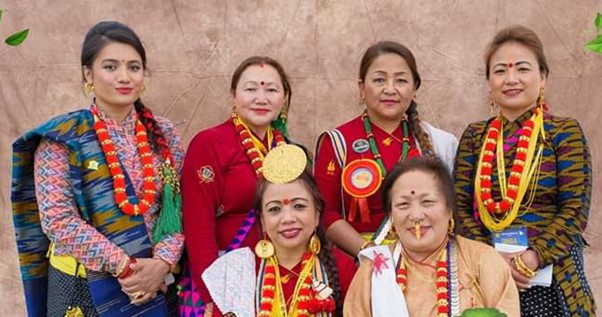
Nepali high-end Western style tailoring has an international reputation with for example we found during the project, one of the Gurkha association leads (Major Dewan at BGWS) sharing that he has all his suits made in Kathmandu.
New York based Prabal Gurung is for example one of the world’s top fashion designers.
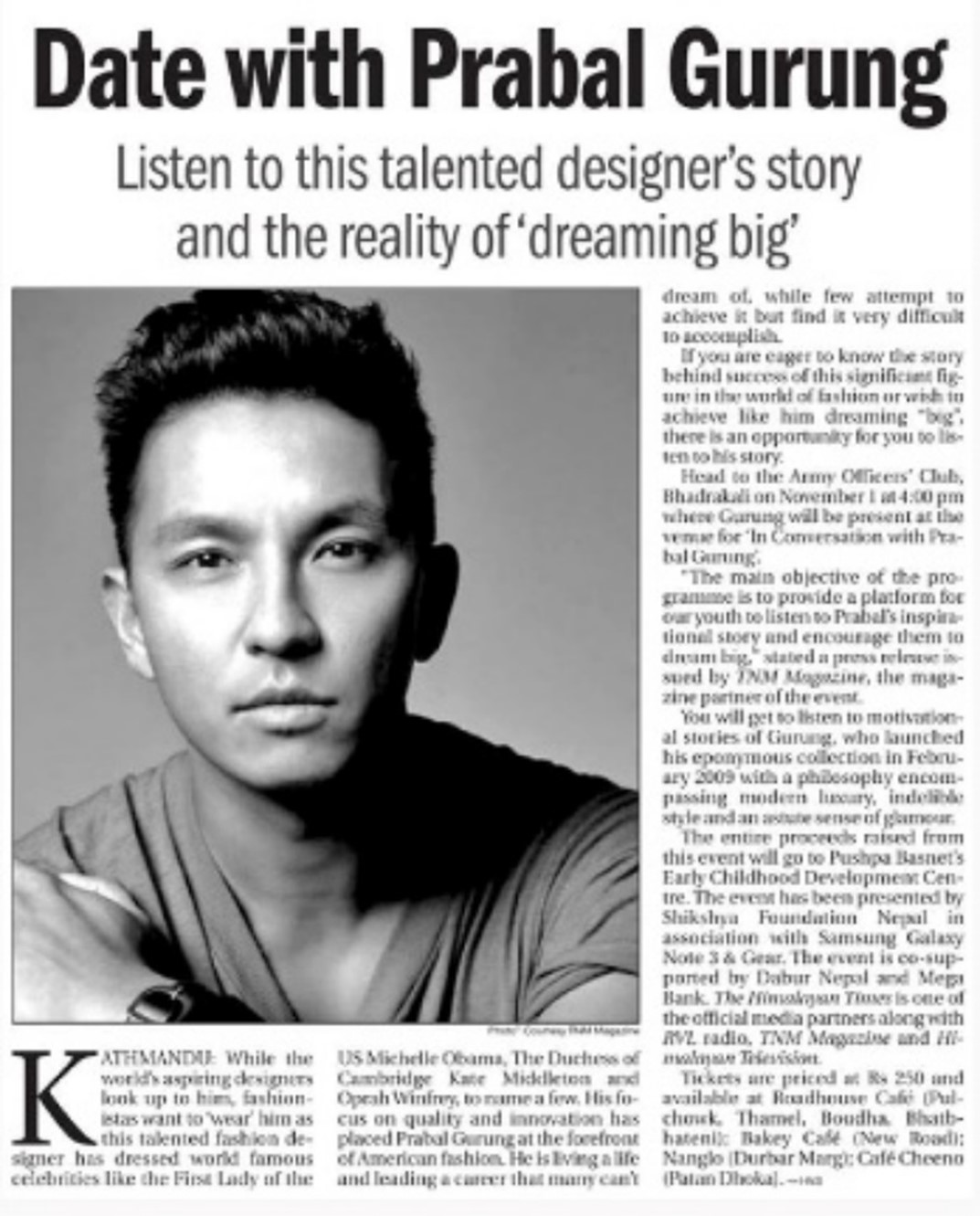
It should be noted as well that UK Nepali community members, especially younger generation ones, and non-Nepali British visitors to Nepal often wear culture-related T-shirts of very high quality and displaying cultural, often spiritual symbols designs (below):
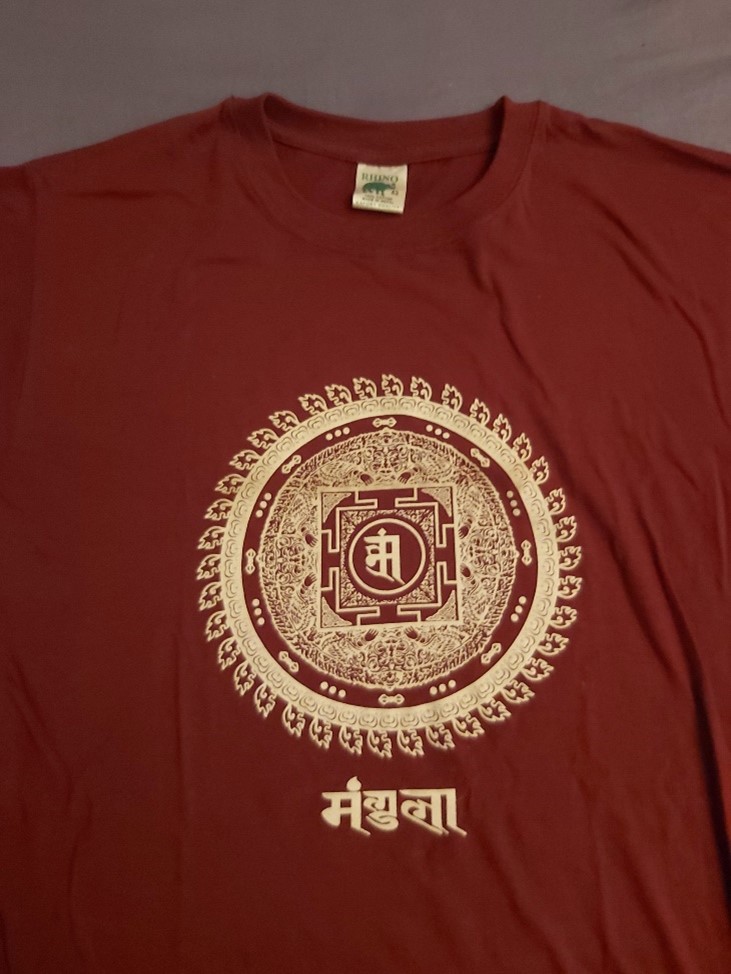
In terms of traditional ethnic, military service context, and functional civilian, our information resource Gurkha and Sherpa components includes sections where headgear/hats details are also provided – with transcultural clothing domain learning outstanding knowledge and details.

